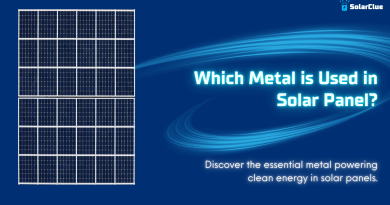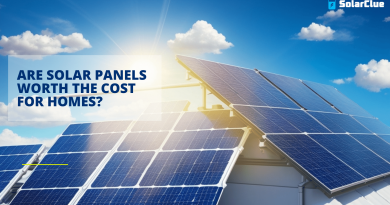How Much Electricity Do Solar Panels Generate?
Understanding the power output of solar panels is essential for maximizing the efficiency of solar energy systems. This guide will discuss factors influencing solar panel performance, such as wattage rating, panel efficiency, sunlight intensity, and temperature. We’ll also provide examples and calculations to estimate the energy production of a single solar panel and explain how multiple panels can be combined for higher overall power output.
Table of Contents
- 1 The Concept of Solar Panel Wattage and Its Significance
- 1.1 Factors Affecting Solar Panel Power Output
- 1.2 Factors Affecting Solar Panel Power Output
- 1.3 Calculating Energy Production Based on Panel Wattage and Peak Sun Hours
- 1.4 The Impact of Panel Efficiency on Power Output
- 1.5 Comparing Different Solar Panel Types in Terms of Wattage
- 1.6 The Role of Location and Climate in Solar Panel Performance
- 1.7 Combining Multiple Panels for Higher Power Output
- 1.8 The Impact of Battery Storage on Energy Production
- 1.9 Conclusion
- 1.10 FAQ Section
The Concept of Solar Panel Wattage and Its Significance
Wattage Explained:
- Definition: Wattage is the measure of electrical power output, expressed in watts (W). For solar panels, wattage indicates the maximum power output under standard test conditions (STC), which include optimal sunlight, temperature, and other factors.
- Significance: Higher wattage panels can produce more electricity, making them more suitable for installations where space is limited.
Factors Affecting Solar Panel Power Output
Sunlight Intensity:
- Solar Irradiance: The amount of sunlight reaching the panel directly impacts its power output. Solar irradiance varies depending on location, time of year, and weather conditions.
Temperature:
- Temperature Coefficient: Solar panels typically lose efficiency as temperatures rise. The temperature coefficient indicates how much power output decreases with each degree Celsius above 25°C.
Shading:
- Impact of Shading: Shading from trees, buildings, or other obstructions can significantly reduce a solar panel’s power output. Even partial shading can drastically decrease efficiency.
Factors Affecting Solar Panel Power Output
| Factor | Impact on Power Output | Explanation |
|---|---|---|
| Wattage | Determines potential energy production | Higher wattage panels generate more electricity under optimal conditions |
| Sunlight Intensity | Directly proportional to power output | More sunlight = higher output; varies by location and weather |
| Temperature | Inversely affects power output | Higher temperatures reduce efficiency and power output |
| Shading | Significantly reduces power output | Even partial shading can cause a substantial drop in efficiency |
| Panel Efficiency | Determines how much sunlight is converted to electricity | Higher efficiency panels produce more power from the same amount of sunlight |
Calculating Energy Production Based on Panel Wattage and Peak Sun Hours
Basic Calculation:
- Formula: Energy (kWh)=Panel Wattage (kW)×Peak Sun Hours (h/day)×Days
- Example Calculation: For a 350W (0.35 kW) solar panel in a location with 5 peak sun hours per day:
- Daily Energy Production: 0.35 kW×5 h/day=1.75 kWh/day
- Monthly Energy Production: 1.75 kWh/day×30 days=52.5 kWh/month
- Annual Energy Production: 1.75 kWh/day×365 days=638.75 kWh/yea
The Impact of Panel Efficiency on Power Output
Efficiency Explained:
- Definition: Panel efficiency is the percentage of sunlight that a solar panel can convert into usable electricity. A higher efficiency panel produces more power from the same amount of sunlight.
- Impact: For example, a 20% efficient panel will produce more electricity than a 15% efficient panel of the same size, especially in areas with limited space.
Comparing Different Solar Panel Types in Terms of Wattage
Monocrystalline vs. Polycrystalline:
- Monocrystalline Panels: Typically have higher efficiency and wattage, making them ideal for installations with space constraints.
- Polycrystalline Panels: Generally offer lower efficiency and wattage but are more cost-effective, making them suitable for larger installations.
The Role of Location and Climate in Solar Panel Performance
Geographic Considerations:
- Sunlight Availability: Locations closer to the equator or in sunny regions receive more consistent sunlight, leading to higher power output.
- Seasonal Variations: Solar panels produce more energy in summer due to longer daylight hours and higher solar irradiance.
Combining Multiple Panels for Higher Power Output
System Scaling:
- Series vs. Parallel: Solar panels can be connected in series (increasing voltage) or parallel (increasing current) to scale up the total system power output.
- Example: Combining ten 350W panels can yield a total system output of 3.5 kW, significantly increasing energy production.
The Impact of Battery Storage on Energy Production
Energy Storage:
- Maximizing Efficiency: Battery storage allows for excess energy generated during the day to be stored and used during nighttime or low sunlight periods, improving overall system efficiency.
Conclusion
Understanding the power output of solar panels is crucial for designing an efficient solar energy system. By considering factors such as wattage, efficiency, sunlight intensity, and temperature, you can accurately estimate energy production and optimize the performance of your solar installation. Whether you’re planning a small residential setup or a large-scale commercial project, this guide provides the essential knowledge to harness the full potential of solar power.
Here at SolarClue®, we offer a smart, practical, and “beautiful” solution. You will be answered for all the questions related to Solar.
We provide all kinds of brands that are the Best Solar panels in India.
If you are the one who is planning for the solar power system. Don’t hesitate to contact our team!
Looking forward to empowering you with solar energy, just like hundreds of our other clients!
FAQ Section
1. How do I calculate the power output of a solar panel?
Use the formula: Energy (kWh)=Panel Wattage (kW)×Peak Sun Hours (h/day)×Days
2. What factors affect the power output of a solar panel?
Key factors include wattage, sunlight intensity, temperature, shading, and panel efficiency.
3. How does temperature affect solar panel performance?
Higher temperatures typically reduce the efficiency of solar panels, leading to lower power output.
4. Can multiple solar panels be combined to increase power output?
Yes, solar panels can be combined in series or parallel to increase the total power output of your solar energy system.
5. Why is panel efficiency important?
Higher efficiency panels generate more electricity from the same amount of sunlight, making them more effective in space-constrained installations.



